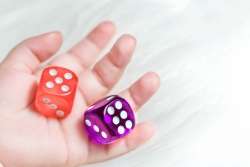Let’s Understand the Probability Concept
“Probability” might sound like a big, word, especially when thinking about preschoolers. However, helping your preschooler understand basic probability concept is simpler than it seems. It’s like when we guess whether it will rain because the sky is gray or predict that our favorite team might win because they’ve been playing well. These daily hunches are all about probability. For our little ones, it isn’t about mastering the math behind it. Instead, it’s about nurturing their innate ability to recognize patterns and make predictions.
Just think about the last time your child tried to guess the flavor of the next jellybean they’d pick from a mixed bag. They’re using their tiny brains to estimate chances, even if they don’t know the term “probability” yet. The beauty is, these concepts are all around us. Every time they play a game, decide which toy to pick up, or even which sock to wear, they’re tapping into basic probability principles. So, while the word might seem hefty, the idea is as simple and natural as childhood curiosity itself.
In this article, we are going to explore effective tips that are going to guide you in helping your preschooler understand this concept.
Ways to Help Your Child Understand Basic Probability Concept.
Use Everyday Language
We all know how tricky it can be to grasp a new idea when it’s surrounded by confusing terms. Kids feel that tenfold. That’s why simplicity is the name of the game. Let’s put it into perspective. Think about when you first learned to cook. Instead of diving into complex recipes, you probably started with basic ingredients and simple dishes. In the same way, when it comes to helping your preschooler understand the basic probability concept, it’s essential to begin with familiar scenarios and relatable situations.
For instance, when they’re deciding what to wear in the morning, chat about the weather. You could say, “It looks cloudy today, so there’s a good chance it might rain. Maybe we should choose your rain boots.” Such interactions make them ponder the outcomes of their choices based on evidence. Over time, they’ll start connecting the dots, realizing that certain events make other events more probable.
So, keep it straightforward, relatable, and fun.
Play Simple Games of Chance to help your child Understand Basic Probability Concept
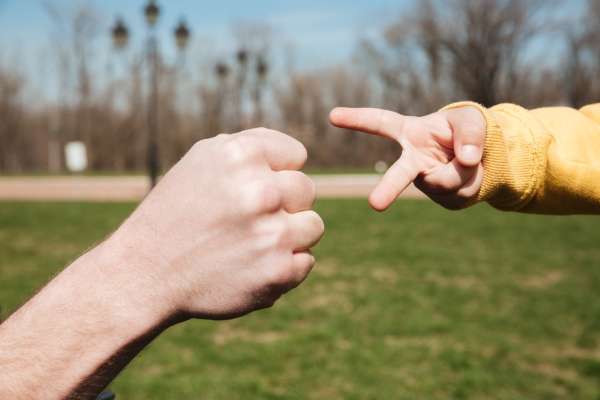
Playing is second nature to kids. It’s their way of understanding the world, and it’s ours too, if we think back to our childhood. We learn best when we’re having fun, right? That’s why games are such a fantastic tool for teaching, especially those that involve chance.
Now, think about the exhilaration of tossing a coin. Heads or tails? There’s a thrill in the unpredictability. Kids feel that too. And by playing these games, they begin to understand that there’s a 50-50 chance of guessing the outcome. Helping your preschooler understand the basic probability concept is as simple as saying, “If you guess heads and it lands heads up, you win! But if it’s tails, then maybe next time!”
And then there’s “Rock, Paper, Scissors.” While playing, pause to discuss. “If you choose rock and I choose scissors, you win because rock crushes scissors. But what if I choose paper next time?” These conversations instill the essence of probability in a playful and natural manner.
Remember, it’s not about drilling them with facts. It’s about letting them explore, guess, win, and sometimes lose. Through this playful exploration, they begin to grasp the simple notions of chance and predictability.
Visual Representation
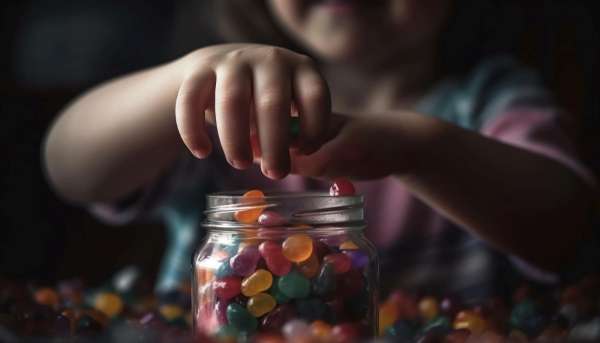
“Seeing is believing.” For kids, this couldn’t be truer. Words can sometimes go over their heads, but visuals stick. It’s like when they see a chocolate cake and instantly know they want a slice.
The same principle applies when trying to make them understand basic probability concepts. Instead of just talking about it, let them see and feel it. Let’s go back to the jar filled with red and blue marbles. Before they reach in, have a quick chat. “Look at all those marbles! Can you see there are more blue ones than red? What do you think you’d pull out first? Red or blue?”
By letting them make a prediction based on what they see, they’re practicing probability. And when they pull out a marble and see the result, it reinforces their learning. Helping your child understand basic It’s not just about guessing; it’s about making an educated guess based on the visual cues in front of them.
So, next time you want to teach a probability lesson, remember the power of visuals. It’s engaging, interactive, and often, way more effective than just words. They see, they guess, they learn
Storytime with Probability Concepts
Everyone loves a good story, especially kids. Their eyes light up, their ears perk, and their imaginations run wild. It’s in these magical moments that teaching becomes almost effortless. Stories have this unique ability to convey complex ideas in the simplest of ways.
Imagine a tale about Peter the Rabbit, who stands at a crossroads in a vast, enchanting forest. On one path, he hears the soft rustling of leaves, possibly hinting at the presence of his friends. On the other, the melodious chirping of birds, suggesting a serene meadow ahead. Which path should he choose? What are the chances of each choice leading to a fun adventure or a calm afternoon?
Or think about Bella the Cat, who finds two boxes in the living room. One is small and cozy, the other large and spacious. Which one would be more comfortable for a nap? Which one might have a surprise toy inside?
As you spin these tales, kids start to weigh the options for the characters. They might not realize it, but they’re grasping essential probability concepts through the twists and turns of the story
Make Predictions Together
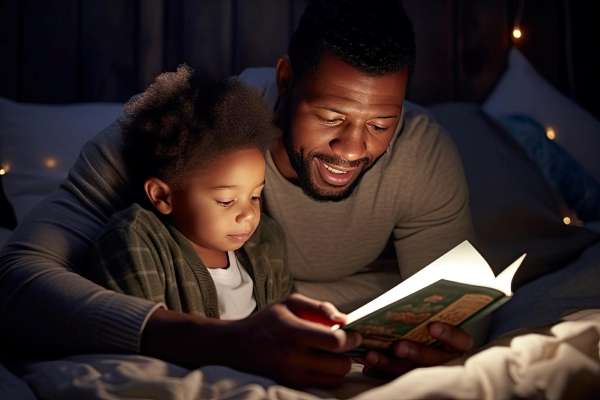
Children have a boundless imagination. One minute they’re astronauts, the next, they’re deep-sea divers. While their world of make-believe is vast and vivid, it also offers a fantastic platform for learning.
Consider the everyday journey you take with your child to the park. As you walk or drive, play a little game. “Hey, let’s make a guess! How many red cars do you think we’ll spot today?” As you move along, count them out together. Whether the final tally matches the prediction or not, the fun lies in the anticipation and observation.
Or when snack time beckons and those delicious cookies are up for grabs, pose a question. “Before we open the jar, how many cookies do you think are left inside?” After guessing, the reveal becomes an exciting moment of truth.
Such daily predictions aren’t just games; they are exercises for the brain. They challenge kids to think, observe, and reassess. Each guess they make, and every outcome they witness sharpens their analytical prowess and understanding of probability.
Hands-on Experiments to Understand Basic Probability Concept
Let’s face it, we all, no matter our age, learn best when we’re deeply involved in an activity. The tactile experience, the suspense, the unpredictability – they all combine to form the perfect learning environment.
Think about the thrill of rolling dice. Each face presents a possibility. As the dice tumble and roll, children eagerly await the outcome. After the dice settle, there’s a burst of realization. “I got a six!” or “Two threes in a row!” It’s in these moments that they start to understand the basic probability concept. They begin to gauge which outcomes are more likely and which ones are rare.
Take card games, for instance. A simple game of ‘Higher or Lower’ with a deck of cards can spark discussions. “Do you think the next card will be higher than a seven? Why do you think so?” Every draw, every prediction, every revelation adds a layer to their comprehension.
The beauty of hands-on experiments is that they’re immersive. They’re not just learning about probability; they’re experiencing it. So, keep those dice and cards close. They’re not just toys; they’re tools for understanding and exploration!
Probability in Nature

Nature, in its infinite beauty, is a vast classroom of its own. Every day, every moment, it offers countless opportunities for exploration and learning. And guess what? Probability is one of those fascinating lessons whispered by the winds and sung by the birds.
Imagine taking a leisurely stroll with your child in the park. As you walk, point to the birds chirping above. “See those little birds? Which one do you think might visit our bird feeder at home?” They might point to a common sparrow or a pigeon, familiar sights in your backyard.
In the midst of this, slip in a fun question. “Do you think we might spot a flamingo at our feeder tomorrow?” Their giggles and chuckles will fill the air, but it’s also the moment when they start to understand the basic probability concept. While sparrows frequent feeders, the sight of a flamingo would be rare, almost impossible!
By using such playful examples from nature, you’re teaching them to assess likelihood based on observation and knowledge. And the best part? These lessons are cloaked in fun and humor, making them all the more memorable.
Graphing and Counting
You remember when you first learned how to count, You’d line up your toys or stack blocks, and that hands-on activity made the numbers real for you. Now, think about combining that counting fun with vibrant visuals! Enter graphing.
Let’s say you and your little one have just finished a fun game where you predicted how many times a tossed coin would land on heads versus tails. After several tosses, you’ve got a handful of results. Now, what?
Instead of just talking about the results, grab some paper and crayons. Draw two big bars – one for heads and one for tails. Every time you had a ‘heads’ result, color or place a sticker in the “heads” bar. Do the same for tails. As you fill in the bars, your child will start to see a pattern. This is where they begin to understand the basic probability concept. They’ll notice if one bar is taller or if they’re about the same height.
By turning numbers into visuals, kids can see and feel the data. It makes the abstract idea of probability more concrete for them. And the best part? They’re having fun while learning.
Compare and Contrast Outcomes
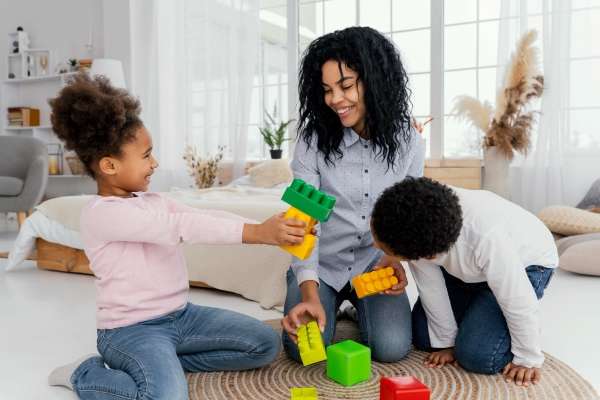
Life is full of little experiments, especially in a child’s world. The simple act of playing with toys in the bathtub can be a lesson in probability, if you look at it the right way.
Picture this: your child has two rubber ducks, one yellow and one blue. As they splash and play, you notice the yellow duck floating to the top more often. After bath time, sit down with your child and ask, “Did you see which duck was on top more?” Most likely, they’ll remember the bright yellow duck making more appearances.
Now, here’s the fun part. Dive into the “why.” Was the yellow duck lighter? Was there a breeze near the tub? Or was it just chance? By comparing and contrasting the outcomes, your child becomes a little detective, seeking answers and trying to understand the reasons behind the results.
The next time you see them at play, they might be more observant, watching closely to see which toy does what. This curiosity, this need to understand the “why” behind things, is the first step in grasping the subtle intricacies of probability.
Engage in Board Games

Those cherished boxes of joy, filled with colorful boards, dice, and tiny game pieces. They’ve been the heart of countless family memories and bonding moments.
Imagine sitting down with your child, all set for a game of “Snakes and Ladders.” As they roll the dice and move their piece, they’re subconsciously dealing with probability. “If I roll a five, I’ll land on a ladder,” they might think. Or, “I hope I don’t roll a two; I don’t want to slide down that snake!” Each roll of the dice is a new lesson in chance.
And it’s not just “Snakes and Ladders.” Think about “Candy Land.” Picking up a card and hoping for a double purple to move closer to the finish line. Or avoiding that dreaded licorice card that makes you lose a turn. Every choice, every card draw, every dice roll teaches them that there are elements of chance in decision-making.
The beauty of board games is that kids are learning without even realizing it. They’re wrapped up in the fun, the competition, and the joy of playing, and all the while, they’re picking up foundational concepts about probability.
Ask Thought-Provoking Questions
The world is full of “what if” questions, and kids, with their boundless imaginations, are naturally drawn to them. Their curiosity knows no limits, so why not tap into it?
Start with playful scenarios. Ask them, “If you had to guess, which do you think is more likely: spotting a unicorn at the park or seeing a dog?” Their little eyes might light up at the idea of seeing a unicorn, even if they know deep down it’s a fantasy.
Now, here’s where we subtly introduce our lesson. In the midst of these fun conversations, gently guide them to understand basic probability concepts. For instance, after a giggle about the unicorn, explain, “While it’s fun to imagine a unicorn at the park, we know it’s more probable we’ll see dogs there since many people take their pets for a walk.”
Wrapping up, use these chats to bridge the gap between imagination and reality. In this delightful mix of fact and fiction, they begin to grasp the differences between what’s possible, and what’s probable.
Celebrate the Unexpected
Life is full of surprises. One day we’re under a clear blue sky, and the next, we’re pulling out umbrellas as the rain pours. For kids, these unexpected turns can be exciting, baffling, or a mix of both.
Begin with everyday moments. Maybe you planned a day at the park, but it rained. Instead of showing disappointment, make it an adventure. Splash in puddles, marvel at rainbows or enjoy an indoor picnic. Highlight that while we thought one thing would happen, something entirely different did, and it turned out to be fun!
In the midst of these moments, you can subtly help them understand basic probability concepts. Point out that while the weather forecast said it might be sunny, there’s always a chance it could rain. It’s all about probabilities. By making a game out of the unexpected and finding joy in these moments, you’re teaching them more than just about the weather. You’re showing them that life doesn’t always go as planned, and that’s okay. After all, it’s the surprises that often make the best memories
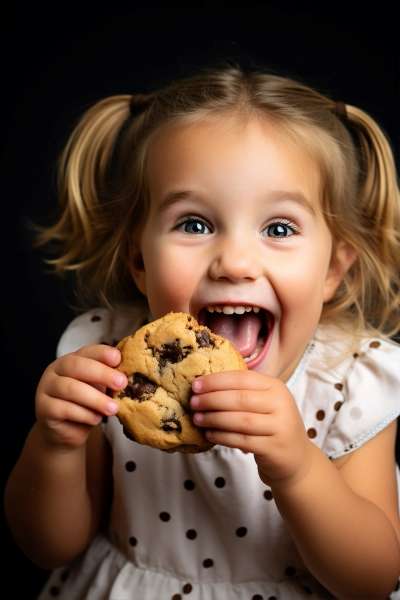
FAQ: Are there any fun games to help in understanding Basic probability concept?
Of course! Games are fantastic tools for helping your child understand basic probability concept.
- Rock, Paper, Scissors: A classic that’s not just about winning or losing but also understanding the chances of each outcome.
- Candy Land: Navigate through a colorful world where each card drawn decides the fate of your journey. It’s a subtle lesson in prediction and probability.
- Coin Toss: A simple yet effective game where you guess which side the coin will land on. Discuss the chances of getting heads or tails and watch their curiosity grow.
- Dice Games: Rolling dice and predicting the outcome can be both fun and educational. Games like “Yahtzee” or even simple dice-rolling games can offer great insights.
- Deck of Cards: Play basic card games and talk about the probability of drawing a certain type or number.
- Board games: Many board games, like “Snakes and Ladders” or “Monopoly,” incorporate chance in their gameplay. As they roll dice or pick cards, kids can learn the unpredictability of outcomes.
Remember, the key is to keep it fun and interactive
Conclusion
We’ve been on quite a journey, haven’t we? From playful games to everyday scenarios, probability is around every corner, waiting to be discovered. Think about it. How often do we ask ourselves about the chances of it raining, finding our lost keys, or guessing the ending to our favorite TV shows? Probability isn’t just numbers and graphs; it’s a way of understanding the world.
To help your child understand basic probability concepts, all we’re doing is giving these everyday wonders a name, a context. By guiding them through these foundational years with fun and creativity, you’re not just building a strong academic foundation. You’re fostering a sense of curiosity, resilience, and critical thinking. So next time you’re faced with a choice of an umbrella or sunglasses, remember to involve your little one. Because, who knows? They might just surprise you with their keen insights.





